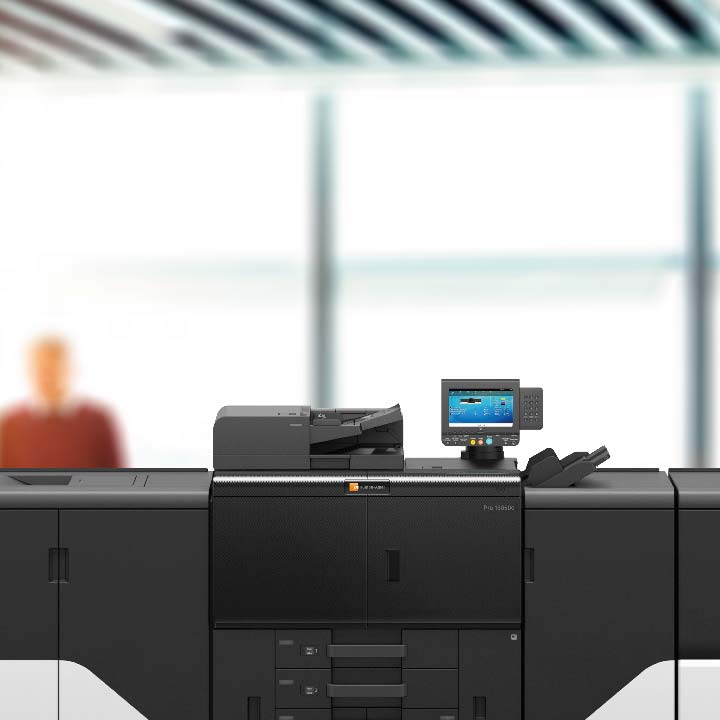The Benefits of Digital Printing: Innovation, Efficiency, and Sustainability

Analogue systems were once a way of life, but the invention of digital devices have driven new efficiencies and innovation in our day-to-day lives and workplaces. This extends to printing, where digital printers have taken over domestic markets and now continue to expand their dominance of industrial sectors.
According to a recent report by Research and Markets, the global digital printing market is estimated to be worth USD 62.05 Billion by 2032 and is expected to register a CAGR of 8.23% from 2023 to 2032. The industry is expected to undergo significant disruption in the coming years due to the exciting new opportunities brought about by advancing technology.
The digitalisation of printing processes will be noticed throughout the entire sector. However, traditional printing methods, such as offset, need not worry, as digital printing is not considered a replacement for all techniques, but is rather an innovative and efficient method for completing quick-turnaround jobs as a more effective alternative.
Print technology is continuously advancing and improving. When digital print first burst onto the scene in its earliest of forms, it was held back by limitations in terms of quality. Over the years, the technology has been tweaked and updated. Today, the differences in quality between digital and offset printing are so minimal that they are hardly noticeable.
Digital printing is now revolutionising the way many businesses manage their increasing print output.
Here are the main reasons why the printing sector needed digital technology to evolve.
1. To welcome innovation into the market
The possibilities that digital printing introduced into today’s business world allow key companies to innovate and remain relevant. In an increasingly competitive environment, large scale communications demand more personalisation than ever before in order to make an impact.
This type of digital technology offers multiple new settings and features which have never been seen before, such as variable printing, which allows users to modify and update documents instantly and easily. This feature can be used for document personalisation and customisation, among other things.
All in all, digital printing enables businesses to add value to their final products, which helps companies interact with their customers, whose attention is increasingly difficult to attract. Hencee the need for more eye-catching content than ever before.
2. To optimise processes and increase efficiency
Businesses today are constantly looking for ways to provide faster and better products and services, while maintaining the required levels of quality. The printing industry is no exception.
Analogue printing can be a laborious option because it requires a certain amount of prep time for the various components to be put in place before a print job can actually start.
Digital printing eliminates the need for preparation time, and the actual printing process is completed more quickly, which means that products can be delivered much more efficiently, in terms of cost and time.
3. To become more eco-friendly
Global companies from every sector understand the importance of becoming more environmentally friendly and reducing their carbon footprint. Climate change awareness has become a key factor in modern business strategies, and digital printing allows firms to meet their printing needs in a more sustainable and eco-friendly way.
Digital print devices have fewer mechanical pieces and components that need to be set manually. This translates into less manufacturing and an overall reduction of repairing processes to deal with.
Not only this, but printing documents digitally also reduces the energy consumption usually required for the task.
If your business prioritises sustainability and intends to reduce its environmental impact, digital printing is the way forward.
4. Take advantage of technology before your competitors
Recent growth in the production printing market has also driven the need for more advanced digital printing technologies. According to a market research study published by Prescient & Strategic Intelligence, the global production printer market expects to reach €5.9 billion in value by 2023.
The production print sector is constantly evolving to provide favourable printing techniques for businesses that have high output, at a reasonable cost. This has been made possible by recent developments in inkjet, a technology that has improved alongside, and thanks to, digital printing.
The “all-in-one” approach that inkjet brings to the production printing sector, by combining colour and monochrome on a single high-speed device, gives this particular printing method the upper hand for businesses seeking to print a variety of documents in high quality.
Although inkjet stands out mainly for its cost efficiency, it is sure to become even more affordable and accessible as time goes on and those who lead the way in its adoption will reap the benefits.

